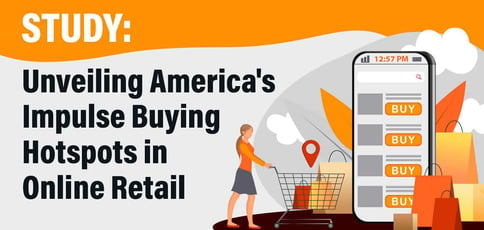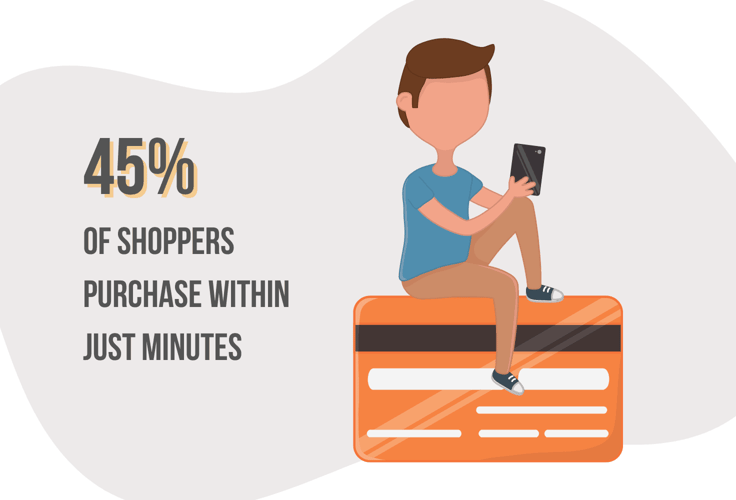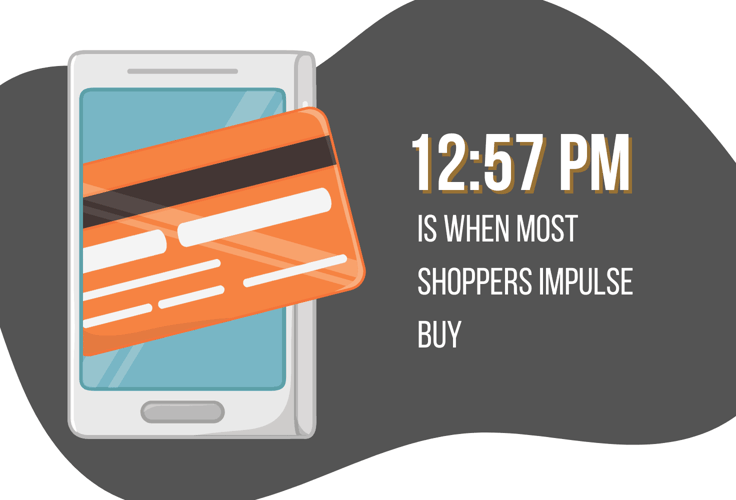
In the dynamic world of eCommerce, businesses deploy sophisticated sales strategies to turn casual browsers into committed buyers. Yet, consumer responses vary greatly. Driven by curiosity about which Americans are more inclined to make impulse purchases, HostingAdvice conducted a survey of 3,000 online marketers across the U.S.
The aim was to identify the states where consumers are most likely to make spontaneous buys. These consumers are often considered easy targets for online businesses. The findings uncovered distinct regional and demographic trends that shape America’s impulse shopping behaviors.
-
Navigate This Article:
California Is the Top State for Impulse Purchases
The survey found that the top states for impulse purchases include California, Florida, Texas, New York, and Arizona, with California taking the lead.
The table below shows how every state ranked:

California’s large and diverse population, high disposable income, and exposure to relentless digital marketing make its residents particularly susceptible to impulse buys. Florida and Texas are close behind, leveraging similar demographic factors, while New York’s bustling lifestyle and Arizona’s tech-savvy residents also see high rates of spur-of-the-moment purchases.
45% of Consumers in the Top States for Online Sales Purchase in Minutes
Additionally, the survey found that 45% of consumers in the most successful states for online sales make purchase decisions within minutes and another 41% within hours, illustrating a pronounced tendency toward impulsivity facilitated by marketing strategies such as flash sales.
Only 9% of consumers say they deliberate for a few days, and a mere 5% say they take more than a week, highlighting that the online shopping environment largely promotes and benefits from instant purchasing behavior.

During promotional periods, impulse purchases account for roughly 26% of sales, underscoring the effectiveness of such campaigns in driving quick consumer actions. Discounts and sales are the most significant drivers, attracting 45% of impulse buyers, followed by free shipping which attracts 34% of impulse buyers. Social media also influences about 13% of these purchases, with influencers playing a significant role in shaping buying habits.
Prime Time for Impulse Buys Is Around 12:57 PM
Interestingly, the peak time for impulse buys is around 12:57 PM, suggesting that many consumers engage in shopping during lunch breaks or brief downtimes, offering a key window for businesses to capture their attention with timely promotions.

The survey also reveals that younger consumers, particularly those ages 18 to 24 and 25 to 34, are the most prone to impulse purchases.
The 18-to-24 age group leads the way, with 30% of impulse purchases attributed to them, followed closely by the 25-to-34 age group at 27%. These findings suggest that younger adults, particularly those in their late teens to early 30s, are the primary drivers of impulsive buying behavior.
This trend diminishes with age, as seen with the 35-to-44 age group accounting for 19% of such purchases. Interest in impulse buying drops significantly among middle-aged and older adults, with those aged 45 to 54 making up 10%, those 55 to 64 at just 3%, and surprisingly, a slight uptick in the 65-plus group at 11%.
Impulse Purchases: An eCommerce Trend to Follow
HostingAdvice’s survey has illuminated significant insights into the trends and behaviors driving impulse buying across the United States. It points to California, Florida, Texas, New York, and Arizona as hotspots for spontaneous purchases, emphasizing the importance of strategic marketing and optimal timing to leverage these behaviors.
As online retailers refine their approaches to exploit rapid decision-making trends, a deep understanding of regional and demographic preferences is essential. This research not only underscores the effectiveness of targeted promotions but also highlights the shifting landscape of consumer behavior in eCommerce.
Methodology
Online panel survey of 3,000 business owners based on age, gender, and geography. Internal data sources are used to obtain population data sets. We used a two-step process to ensure representation through stratified sampling and post-stratification weighting. April 2024.



